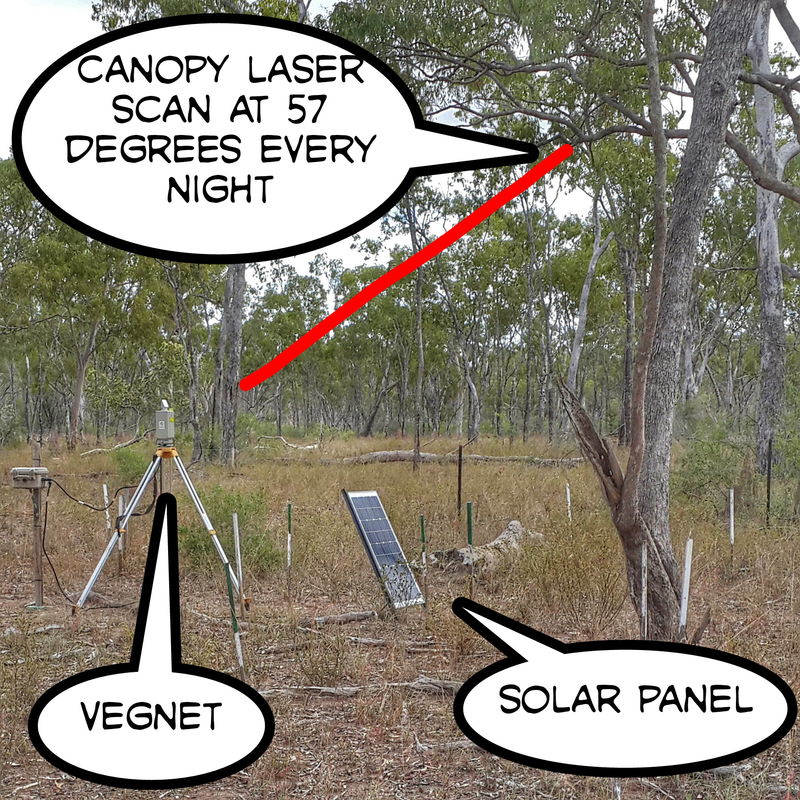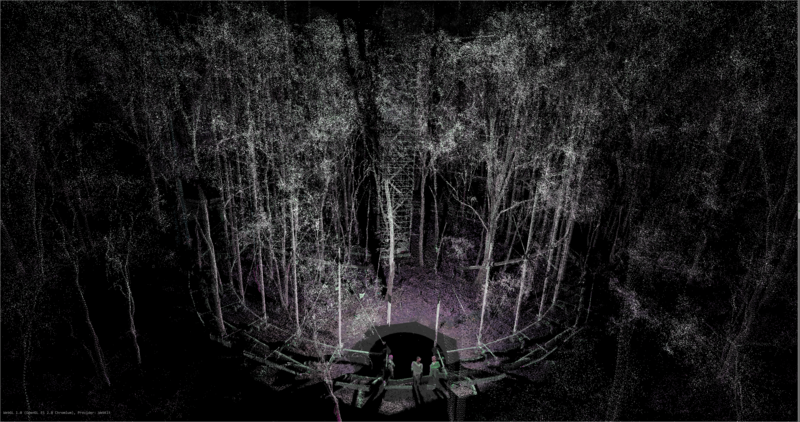I'm back in the field tomorrow heading north to Charters Towers and onto Wambiana Station, a cattle property where a trial started in 1997 to test and develop sustainable and profitable strategies to manage for rainfall variability in extensive grazing lands.
Five replicated grazing strategies (moderate stocking, heavy stocking, rotational wet-season spelling, and two variable stocking strategies) have been applied across the 10 paddocks, each 100Ha in size, since 1997. From the phase 1 report, the trial showed how loss of land condition under heavy stocking compromised productivity, profitability and the local environment whereas moderate stocking led to sustained productivity and improved profitability.
The trial has continued, providing superb long term data to support Earth Observation based analysis. My initial work developing algorithms to reliably recover fractional cover from Landsat led to us building tools such as VegMachine and the APIs and imagery that power the NRM Spatial Hub. These tools look at ground cover, and its trend over time, and in comparison with reference areas, provide synoptic information to land managers.
But cover within a pixel is only part of the story. Processes such as soil movement, wind erosion and water infiltration are also sensitive to the way the cover is arranged, the size of the clumps of vegetation and the space between them and this clumping has been shown to be sensitive to grazing pressure.
This field trip will collect stacks of data using the national protocol, but with additional transects at a 0.2 meter spacing. This will allow us to start looking at the spatial variance at a high spatial resolution, and then scale to see how that would look given various satellite sensors. We'll be getting Worldview-3 imagery, Planet Labs imagery, Sentinel-2 and Landsat imagery across the site over the coming weeks.

The image above is the Wambiana paddocks and land types overlaid on a Planet Labs image acquired just 2 weeks ago. I'm super lucky to be part of their Planet Explorers program so I get to access and work with this fresh imagery. I decided (the day before heading out there) that I should look at the variograms of some of the paddocks using this imagery.
Variograms are kind of nice for investigating the spatial continuity of data and have three cool diagnostic features, the distance where the model flattens out (the range), the height where this happens (the sill) and the height where the line crosses the y axis (the nugget). Sample locations separated by distances closer than the range are spatially autocorrelated. The height of the sill is a measure of the overall variance of the samples, and the height of the nugget indicates spatial sources of variation at distances smaller than the sampling interval. I did part of my PhD on scale many years ago, so it's nice to be putting it to use again.

What we see at Wambiana , using just the red band from the Plant Labs 3.2 m imagery, QGIS and a few lines of Python, is pretty interesting. There's significant subpixel variance in the high and moderate stocking paddocks,. The high stocking rate paddock has a significantly higher sill, or overall variance, and the range to reach this is greater than the other strategies indicating quite a clumped landscape. And the variable and moderate stocking rate paddocks have similar overall variance but quite different spatial structure in the 0 to 10m scale. So even though it's tricky to see any difference at all in the strategies from the imagery directly, the spatial statistics are showing clear differences in the landscape's response to grazing management.
Once we get into the field and start observing the landscape at a field scale, we can start connecting these spatial statistical measures to landscape processes and then start building the science and tools around them to ultimately help land managers. My suspicion is that Landsat will lack the spatial resolution required to monitor spatial changes in landscapes while Sentinel 2 may show some useful detail. But I think application may suit Planet Labs imagery pretty well - because we're looking at spatial variation, the absolute spectral and radiometric calibration are not as critical as they are for spectral based algorithms, the imagery is now super regular and affordable and the delivery over APIs lends itself to automation of monitoring tools for end users.
So stay tuned as we capture a stack of data and post updates from the field over the next few weeks...
Data for this provided by:
Planet Team (2017). Planet Application Program Interface: In Space for Life on Earth. San Francisco, CA. https://api.planet.com



























